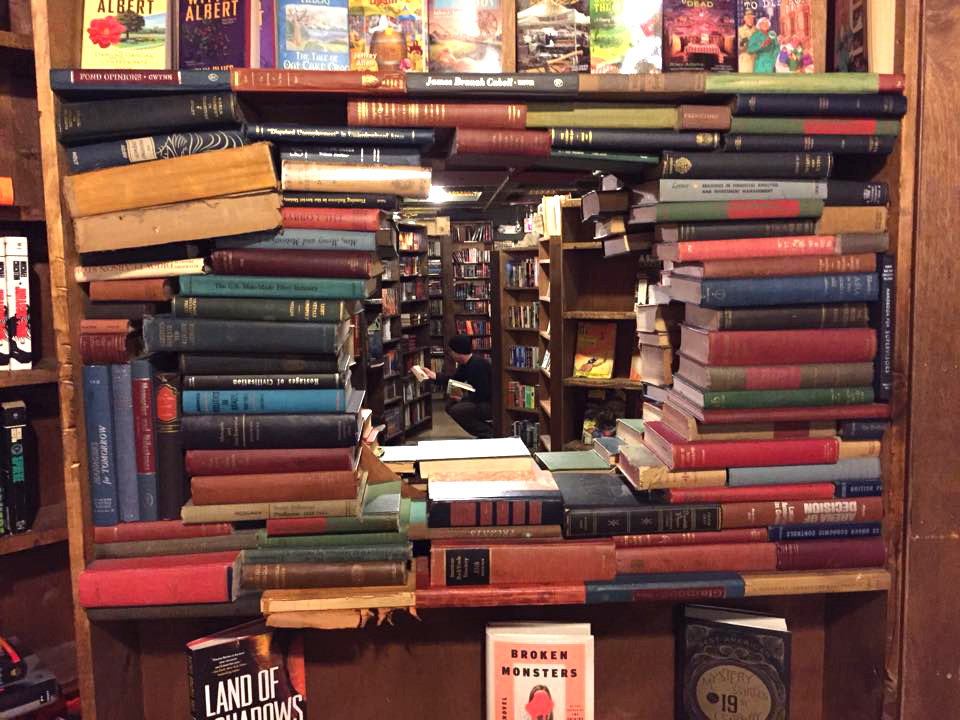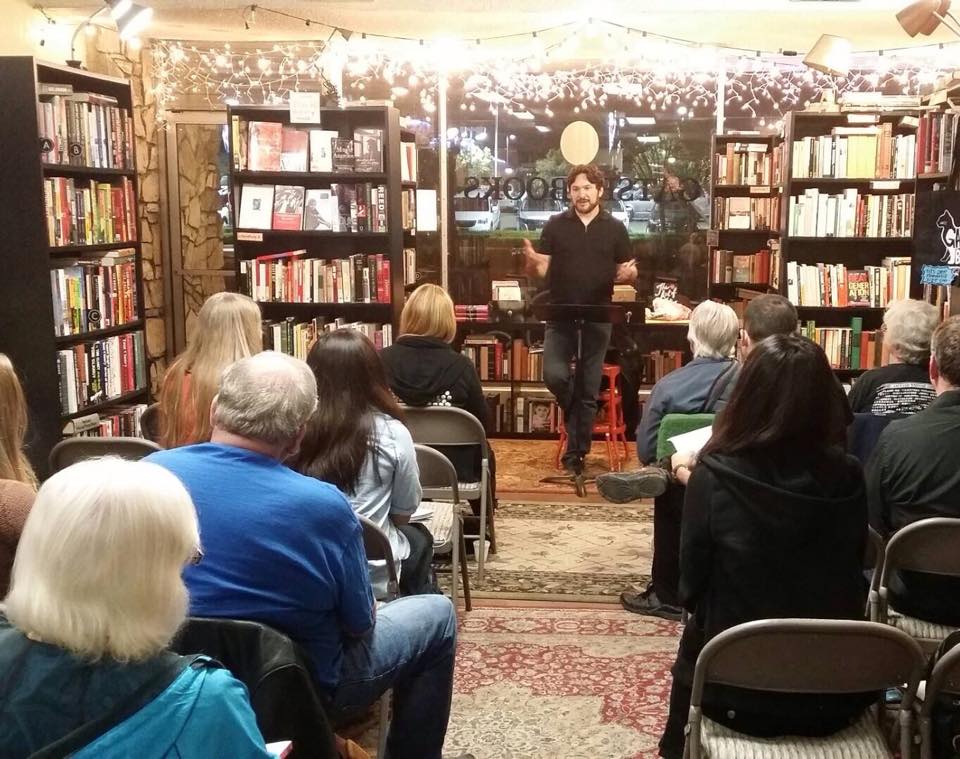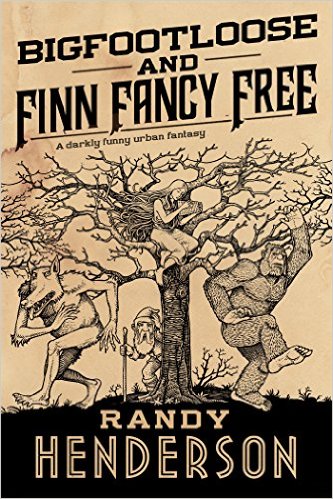
In celebration of Independent Bookstore Day and inspired by a recent debate on the interwebs, I’ve compiled some thoughts on the role of bookstores: how they are (and aren’t) changing, the conflicts between profit and discovery, physical versus online sales, and their future.
STOCKING WHAT SELLS VS PROMOTING NEW VOICES
B&N and other booksellers first and foremost stock what sells in order to make money. If they do not, they will go out of business and there will be even fewer places where new books can be physically shelved or discovered at all. Thus shelves may have a lot of books written long ago by guys like Tolkien or Jordan or Shakespeare. This is similar to the reason big publishers continue to publish new editions of those same books by Tolkien and Jordan et al: because these reliable big sellers subsidize their ability to invest in new authors with low or uncertain profitability.
HOWEVER, it is also true that bookstores help readers discover new authors while browsing.
This is, in fact, one of the most important functions any physical store serves regardless of product – discovery through browsing.
This is part of the reason Amazon is opening physical bookstores – less about trying to get into a dying market, but more about controlling a critical proven way many people “discover” new books or authors today. In other words, Amazon is replacing the lost free marketing they used to get from people browsing bookstores, as ironically more physical stores are pushed out of business by their online sales.
In fact, every book in an Amazon bookstore is face out. HOWEVER, the few stores Amazon has built so far are much smaller than B&Ns – so they are deliberately curating and pre-selecting what they want buyers to “discover.” One can assume they will heavily promote books they have some stake in.
This demonstrates the importance of discovery – and of fighting for variety and diversity in what is available to be discovered.
Importantly, however, having a book in stock to sell is not the same as taking up prime real estate by facing multiple copies of established books/authors that do not need to be “discovered.” If a customer comes to a bookstore wanting J.R.R. Tolkien or Robert Jordan, they likely know they are looking for Tolkien or Jordan and do not need to “discover” them. And for those who didn’t come looking for those books, it is likely that they need only a single image or book to prompt them to buy a copy of something by that author.
So successful bookstores often find a way to balance the service of discovery with the needs of stocking what sells.
HOW WE DISCOVER BOOKS IN BOOKSTORES (AKA THE GLORY OF INDIE BOOKSTORES)
The number one way people discover and buy new books, period, is still word of mouth.
But what makes us stop in a bookstore and pick up a book by an author we don’t already love or haven’t heard of?
A catchy title helps. But it is the cover art that often grabs us and makes us even pause to consider the title, and/or a good hook or blurb on the cover that sparks our curiosity. This of course requires us to see the cover. Yet not every book can be shelved face out if the bookstore wants to stock a decent quantity and variety of books. And not every book can be featured on prominent displays or endcaps.
Indie stores are great in mitigating this fact, even though they still have many of the same problems as a chain like B&N – even more so since they have less room and fewer things like toys and tchotchkes and Nooks subsidizing their meager book profits.
Indie bookstores, however, often employ an engaged and well-read staff who help decide what to stock — tailored to local interests and tastes — and also helps readers discover authors. This is where they shine in my opinion. A good staff or store owner will make recommendations to readers, add staff review and recommendation notes to shelves, and usually have staff-recommended book sections in the store etc. all of which helps readers discover new authors even when the book is spine out. Basically, they sell by their own “word of mouth”.
It is doubtful chains with top-down one-size-fits-all marketing and book promotion like B&N will invest in staff and give individual stores the flexibility to do this.
But there are surely other ways B&N can also improve this balance between stocking bestsellers and promoting discovery.
For example, Video Game stores do not stock every copy of a new game on the shelf, they may have a couple representative cases you can take to the register and they will pull the stock from behind the counter or backroom, then they return the shelf-copy to the shelf. Why not do so with Tolkien and Jordan et al?
I am sure there are even better solutions than this that smarter people than me can come up with, and it would be in their own best interests to do so if they want to add additional value over Amazon.
YET IN-STORE DISCOVERY AND STOCK DOES NOT EQUAL IN-STORE SALES
To make all of the above even more complicated, customers have increasingly shown a habit of discovering something in a physical store, then ordering that item online from wherever they can get it cheapest.
So just as important as stocking and facing books to promote discovery, places like B&N need a model that will encourage customers to purchase the discovered books through their store rather than Amazon or another online retailer, so that the stores are incentivized to promote discovery of new authors rather than only promote the reliable sellers.
Amazon’s stores do this by not putting a store price on the books in the store. When you checkout, the cover price is discounted based on factors like Prime membership etc.
This also means that independent stores have to have and promote online purchasing options for that same store that are easy to access and use.
Of course, an indie bookstore cannot offer Amazon Prime prices on books without quickly going out of business. And the value and convenience of Amazon’s self-publishing platform, and of things like the ability to buy an ebook directly from your e-reader together with a discounted audiobook that synchs with where you leave off so you can move between them seamlessly are frankly hard to compete with. That is why it is important for readers to feel like the bookstore offers some value beyond another point of sale.
That’s why Independent bookstores also bring additional value to readers and communities beyond recommendations, such as author events, book clubs, children’s storytime, not to mention other community activities like trivia nights and wine tastings that the book sales support. The bookstore is a place to hang out and bond and celebrate books. And while readers are hanging out, surprise surprise, they talk about what books they like – i.e. they discover books through word of mouth from other readers.

It is important then that readers come to understand that the discovery and community value of bookstores is worth the cost of buying in those bookstores. I know I have to remind myself of this from time to time, and so try to remind others.
After all, people give more money in tips to their barista, waiter or Lyft driver per drink or meal or ride than they save on the cost of the average book on Amazon. So why not buy that book in the store and consider the extra dollar or two as a tip to the bookstore owner for a job well done.
Bottom line, independent bookstores offer value to readers when they help readers find new favorite authors, have online purchasing options for books not in the store, and offer community events. In other words, when their customers feel the value they get from the bookstore goes beyond finding the cheapest price.
But as readers, we need to sometimes remind each other that value exists in the face of the overwhelming convenience and pricing of places like Amazon. Not necessarily to drive Amazon out of business, especially as a channel for self-published authors, but to create a truly competitive environment in which independent bookstores and even chains like B&N can all thrive together, filling different needs at different times.











